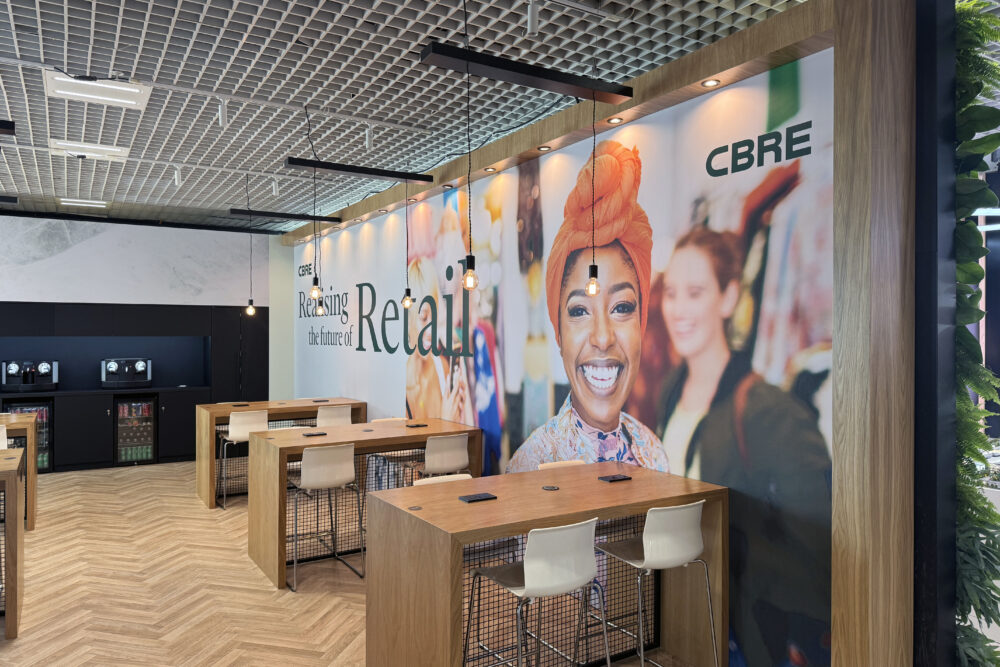The anticipation grew as I entered Confex, the UK’s premier event expo. This annual gathering isn’t just about networking or showcasing; it’s a pilgrimage where industry aficionados converge to explore, innovate, and reinvigorate their event strategies.
This year, my focus is sustainability—a pivotal ethos in event planning. As a company, Outlook Creative is steadfast in its commitment to authentic sustainability by dismissing greenwashing and focusing on impactful change. Our ISO 27001 accreditation stands as a testament to this unwavering dedication.
Within the bustling halls of Confex, sustainable alternatives amid tightening budgets emerged as a prevailing theme. With the events industry contributing to 10% of the world’s carbon footprint, the imperative to act swiftly and decisively has never been clearer. While sustainable solutions often carry a price tag, the landscape is evolving, promising viable options that balance eco-consciousness with fiscal prudence.
Diving into tangible strategies for crafting sustainable events, here are some that we already use:
1. Reuse vs. Recycle: We endeavour to infuse new life into past event materials wherever feasible, curbing carbon emissions and fostering continuity in our creative endeavours. For instance, reusing materials from previous events, even if they’re not the same item, can halve the carbon emissions associated with production.
2. Mindful Material Selection: The appeal of eco-friendly materials can sometimes clash with budget, making it a tough decision for clients. Yet, strides are being made with alternatives like Zero Formaldehyde MDF and VOC-free Sterling board, supporting our commitment to sustainability without compromising quality.
3. Sustainable Graphics and Flooring: Traditional graphic materials often rely on PVC, which is known for its harmful environmental impacts during production and disposal. However, we’ve consciously decided to pivot towards PVC-free alternatives as standard. By opting for eco-friendly materials in our graphics, we minimise our carbon footprint and contribute to the preservation of natural resources.
While flooring may seem negligible in event planning, its environmental ramifications are significant. We adopt a proactive approach by repurposing offcuts rather than discarding flooring after a single use. These offcuts find new life as pallet bases, wraps, and covers, sparing them from ending in landfills. Furthermore, our dedication to recycling extends beyond our operations; we partner with recycling facilities to ensure that even the flooring remnants unsuitable for reuse are repurposed into pallets and other useful industry materials.
4. Venue Selection: The venue serves as the canvas for our sustainable vision, emphasising accessibility and eco-friendly amenities. Opting for venues with alternative energy sources and digital signage further reduces our environmental footprint while enhancing the attendee experience. Transport and travel account for, on average, a whopping 60% of all event emissions, making accessible venues a critical factor in reducing overall emissions where possible.
5. Thoughtful Catering: Acknowledging the disproportionate environmental impact of animal-based diets, we advocate for menus with a high percentage of plant-centric options sourced from local, seasonal produce. This aligns with sustainability goals and caters to diverse dietary preferences. Animal meat is responsible for 57% of all food-based emissions compared with 27% of plant-based emissions, making the shift to plant-based options a significant step in reducing our carbon footprint.
Amidst the dynamic landscape of sustainability, we remain vigilant, adapting to emerging trends and advocating for meaningful change. Our commitment extends beyond the confines of event planning; it’s a testament to our enduring stewardship of client experiences and the planet we call home.

